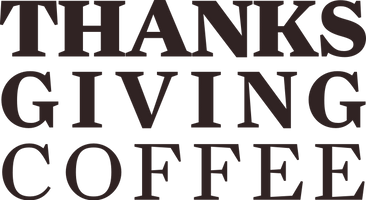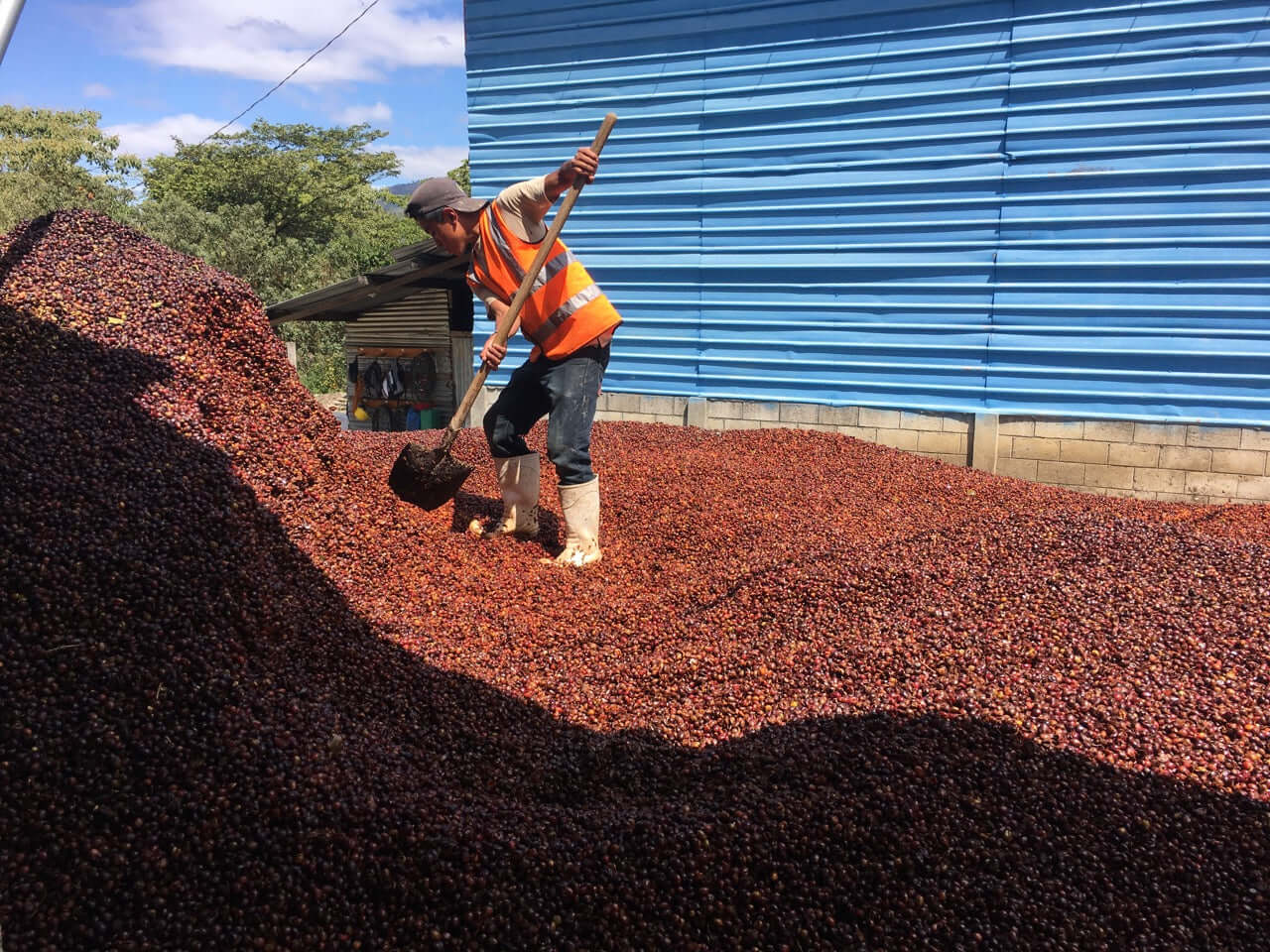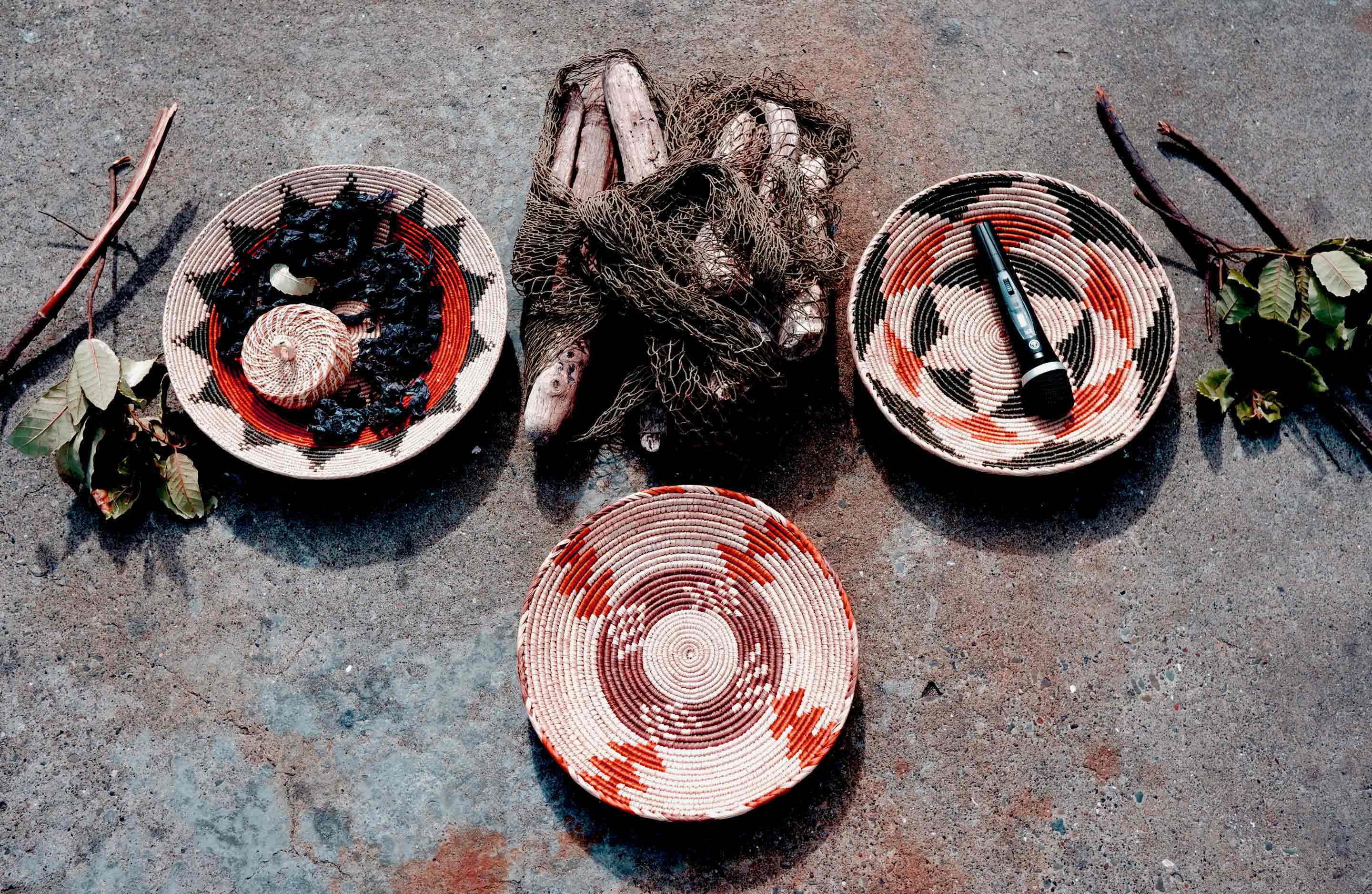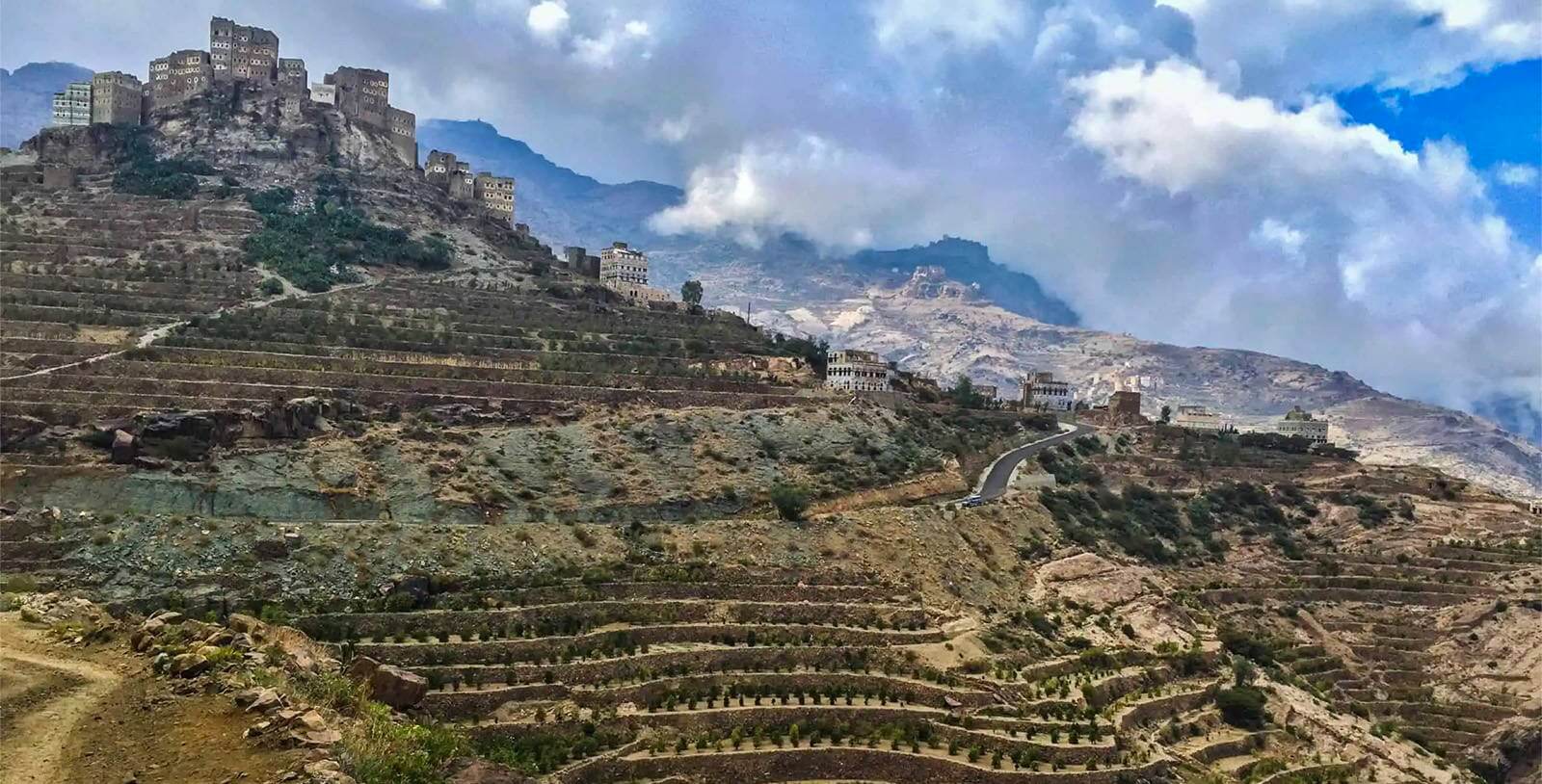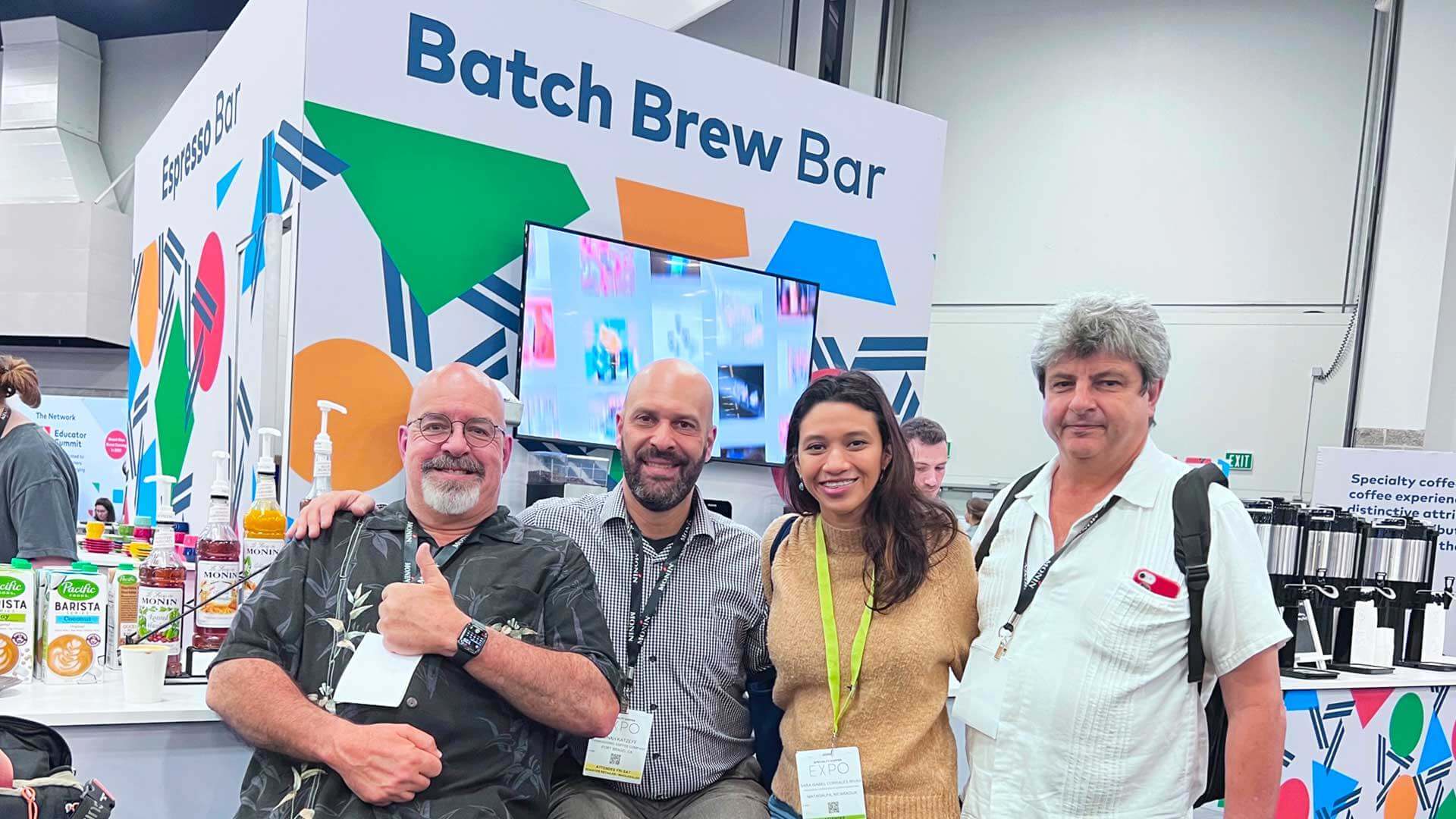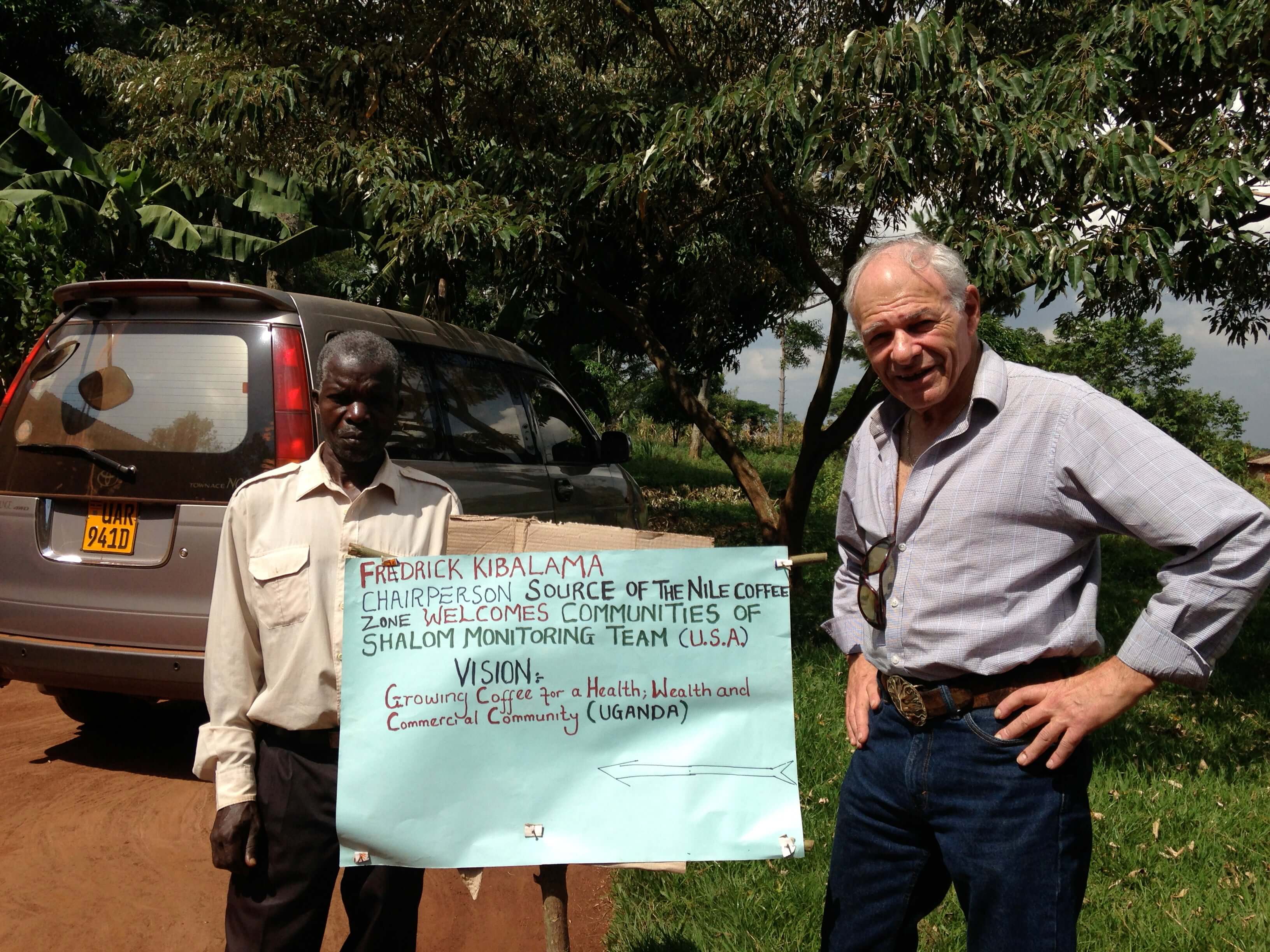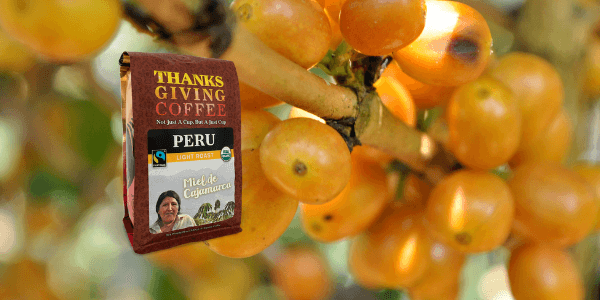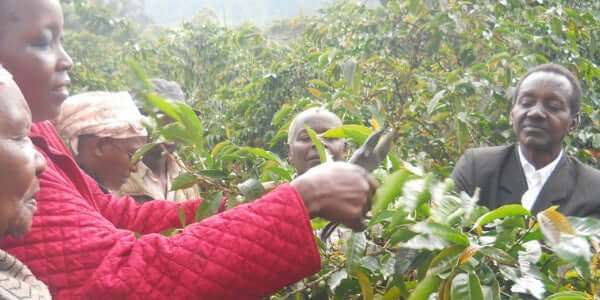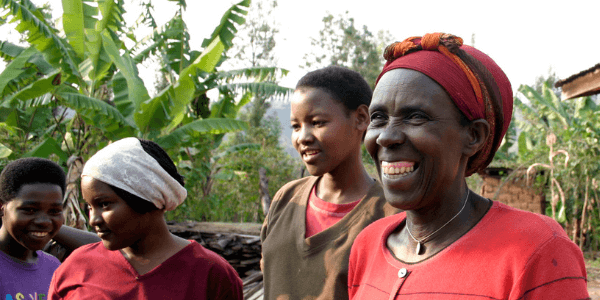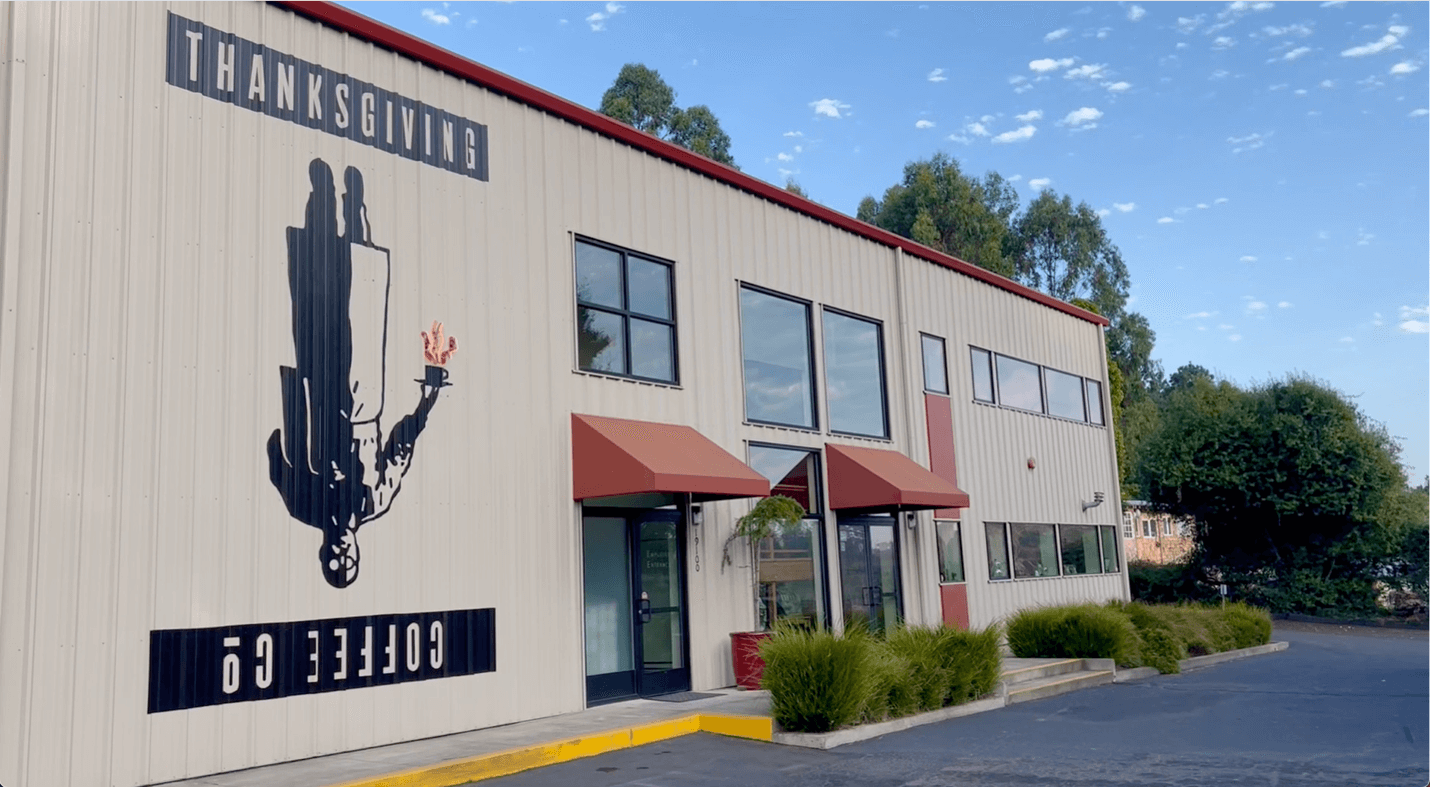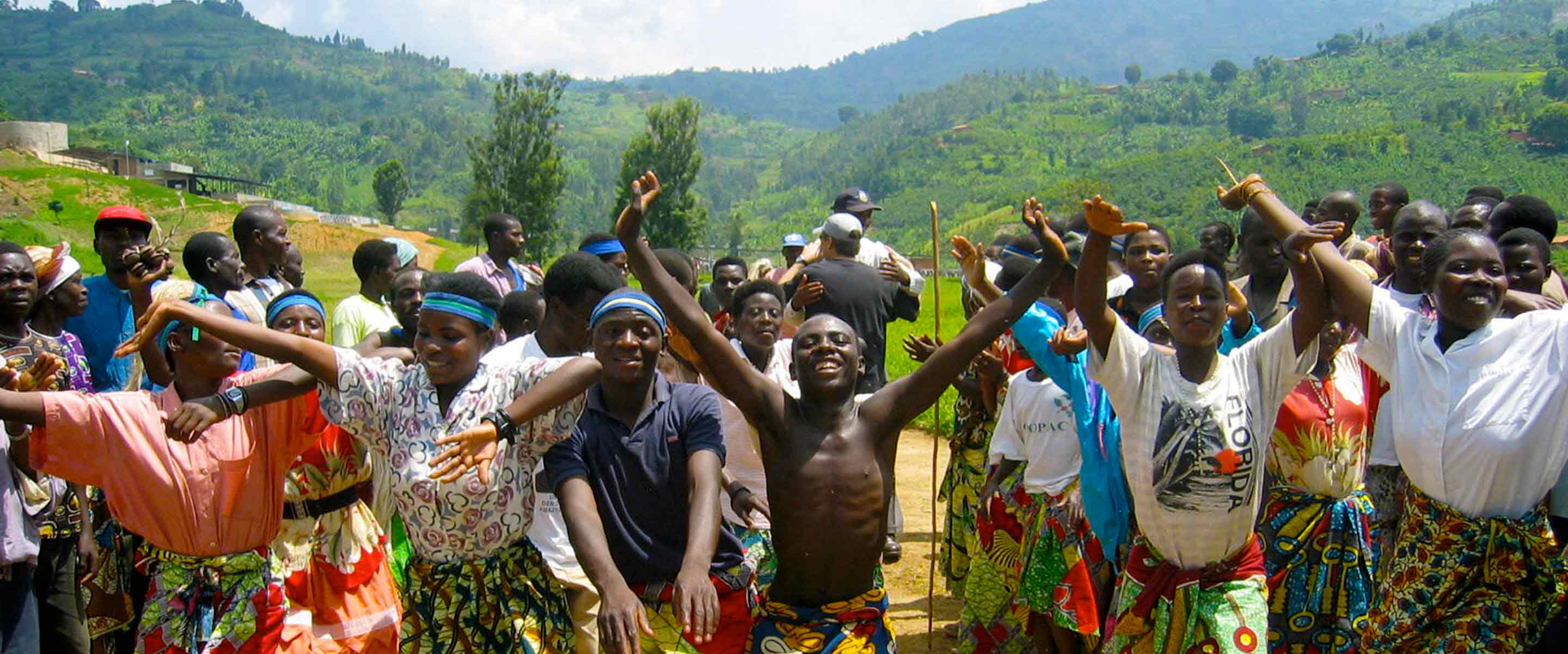
News, Stories and more
Our Blog
View BY :
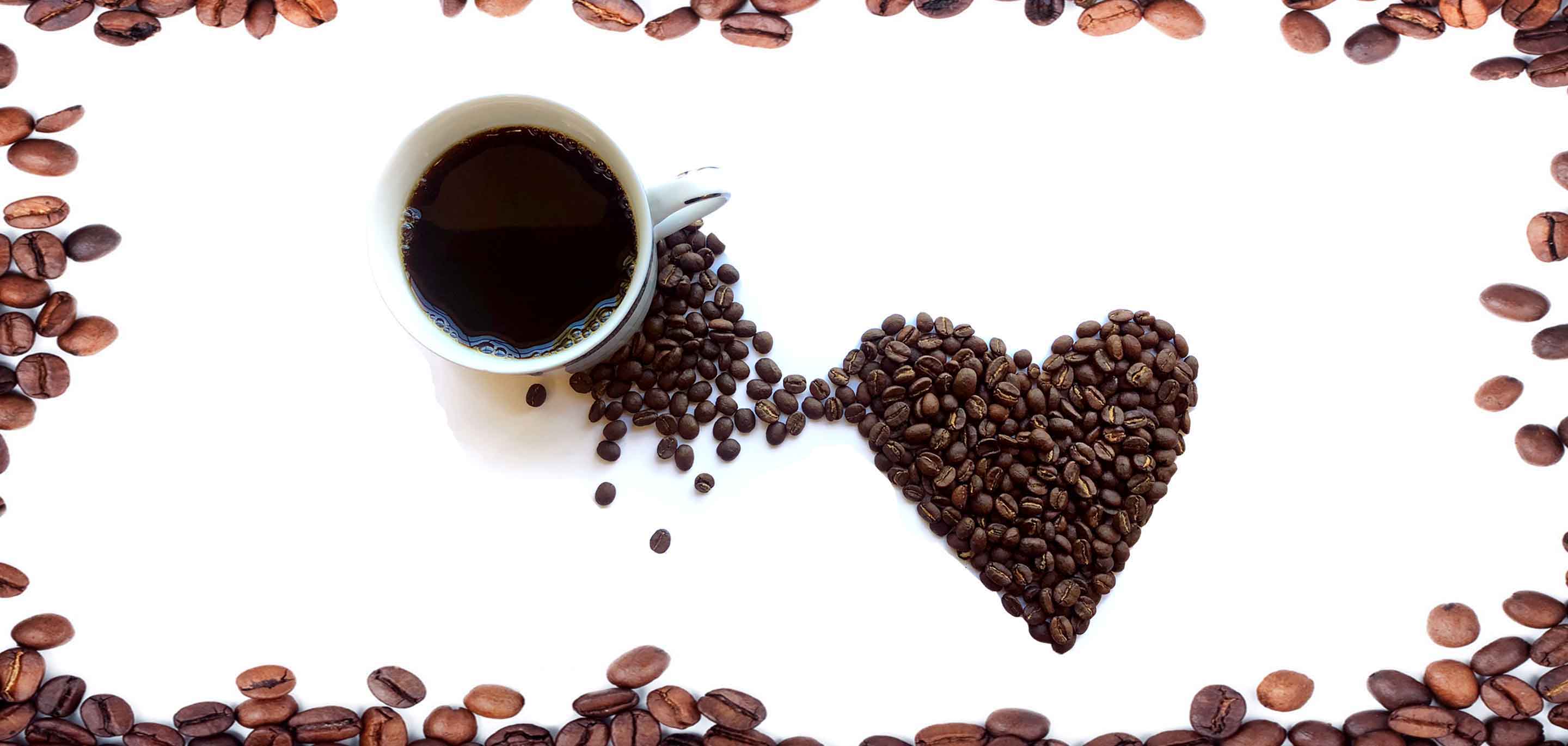
Earning Beans For Coffee Rewards
Thanksgiving Coffee Company Appreciates You We have made it simple and effective for you to get the appreciation we think you deserve. It is the “Earn Beans” reward system. Yay! These rewards will be counted as “beans” which you can redeem as discounts. The more beans you earn the greater the discount, all the way up to free products!
read more-
![The World’s Largest Salmon BBQ]()
We Were There!
Participants of the Salmon BBQ in the beautiful Noyo Harbor, CA
The World’s Largest Salmon BBQ happened on 7/1, and again – Thanksgiving Coffee was there! This event brings together thousands of salmon lovers to raise money for salmon habitat restoration. The salmon fishery in California was closed this year – completely – in order to let the salmon population rebound, so everything that we can do to support increased spawning grounds will help the salmon, our local economy, and the entire ecosystem.
Thanksgiving Coffee Booth at the Salmon BBQ with CEO, Jonah Katzeff (on right ) out front.
Our booth provided hot coffee (Mocha Java and Royal Decaf) and cold brew (Ethiopian Yirgacheffe Natural from the Gedeb region) in exchange for any donation to Salmon Restoration. We raised nearly $500 from donations alone. Our Office Manager, Jennifer, CEO Jonah, and co-founders Paul and Joan were on hand with Sales and Marketing Manager, Joe, to keep the coffee flowing for 8 hours.
Jennifer Brown at Thanksgiving Coffee Booth at the Salmon BBQ
All we can do to support increased spawning grounds will help the salmon,
our local economy, and the entire ecosystem.We were not alone in this effort: fellow B Corps including North Coast Brewing Company and Harvest Market were on hand to donate, raise additional funds, and support the cause. The menu usually includes corn on the cob, but corn was in short supply this year, so Harvest Market was able to source organic new potatoes to supplant the menu.
Jennifer Bosma on right, representing both Harvest Market and Rotary
North Coast Brewing Company's CEO, Jennifer Owen, along with senior brewing staff serving a thirsty crowd at the World's Largest Salmon BBQ
Dozens of volunteers helped pull this event together and make it run smoothly including Rotary International (with participation from both Fort Bragg and Mendocino chapters), California Conservation Corp., Mendocino Sheriff’s Department, Salmon Restoration Association, and the celebrity grill team including lots of local dignitaries including Fort Bragg’s Mayor, several County Commissioners, local business owners, and many, many more.
Volunteers Serving up the food with smiles
"West of Nowhere" playing at the Salmon BBQ
The event had a lively festival atmosphere with great weather, great vibes and lots of live music including West of Nowhere (pictured), Steven Bates Band, the Caspar Kings, Earl Oliver, and Deep Pockets who started the day off with some very danceable grooves. One of the highlights is the annual release of the supporting shirt… this year’s shirt slogan, “If you must smoke – smoke salmon.”
Follow Stories of Restoration and More Fueled by Coffee
The World’s Largest Salmon BBQ
read more -
![July Single Origin Club: Guatemala Guaya'b]()
Single Origin Club: Guatemala Guaya'b
What is a Single Origin coffee? Simply put, these coffees are defined by the place they come from.
Single Origin coffees are from a specific farm or group of farms that make up small cooperatives. You’ll find that most of our Single Origin coffees are light roasted.
This month we're sharing our Guaya'b coffee grown in Guatemala by the Guaya'b Cooperative and light-roasted here at Thanksgiving Coffee in Fort Bragg, CA.
Guaya'b from Guatemala
The farmers of the Guaya’b Cooperative grow coffee under a dense forest canopy that doubles as the winter home for dozens of species of migratory birds as well as local flora and fauna. It wasn’t always this way.
When coffee was introduced to this remote region 40 years ago, it was promoted as an alternative to subsistence agriculture, and farmers were taught to clear forests to make way for this new cash crop. Fortunately, these farmers are closely connected to the health of their land, and have re-established their once logged forests providing much needed shade and diverse ecosystems in which coffee thrives.
Now, a new generation of farmers works to cultivate coffee and a variety of other cash and subsistence crops to increase incomes, and to protect the health of the land. Thanks to their partnership with our importer, Elan Organic Coffee, Guaya’b has perfected the art of picking, depulping and fermenting their coffee to produce deep, juicy, and full flavored coffee with a truly distinctive character.
Altitude: 1,300-1,600 meters
Processing: Wet/washed
Farmer: Asosicacion Guaya’b Civil
Varietal: Bourbon, Typica, Caturra
In fact, the farmers’ coffee is so unique that they periodically run into trouble with ANACAFE, Guatemala’s national coffee marketing wing, which tries to subdue Guaya’b’s flair and replace it with a more generic cup profile produced by less-inventive processing methods.
Not content to merely develop members’ coffee production, Guaya’b has a pilot organic honey project, which also helps to increase coffee yields thanks to improved pollination.
Not ready to join the Single Origin Club? Make a one-time purchase of our Guatemala Guaya'b Light Roast coffee.
July Single Origin Club: Guatemala Guaya'b
read more -
![Celebrate Women in Conservation]()
World Female Ranger Week
The first ever World Female Ranger Award winner Caren Yegon (Chags Photography)
Original Post from Mara Elephant Project by Claire Bolles
Protecting Elephants and Their Habitats Across the Greater Mara Ecosystem
It is World Female Ranger Week, a time set aside to highlight the important conservation work undertaken by women on the frontline. The first ever World Female Ranger Award winner Caren Yegon just completed a month-long LEAD Ranger training at the Wildlife Works facility in Rukinga, Kenya. (Our cause coffee partner) The Mara Elephant Project / Sheldrick Wildlife Trust Mau De-Snaring Unit lead ranger was joined by 13 rangers, which included nine women, from other conservation organizations for the Bush School Instructor course facilitated by both LEAD Ranger and special guest instructors.
Caren will take the skills she learned and bring them back to educate other MEP rangers. Skills like making safe drinking water in the field, using various signals to communicate when you’re lost or need to be discreet, making shelter and fire with basic supplies, navigating in the field without technology and more.
As we join other conservation organizations celebrating World Female Ranger Week, we continue our commitment to nurture a diverse and inclusive workforce thanks to your support.
A special thanks to LEAD Ranger for their commitment to nature’s first responders and to How Many Elephants for supporting World Female Ranger Week to shine a light on women like Caren.
You can send more Mara Elephant Project rangers like Caren for training in 2023, when you purchase Protect Our Elephants coffee. Support the MEP conservation heroes.
Follow our Stories and More....
Lavender Grace is the Sustainable Ecology Consultant for Thanksgiving Coffee Company .
Celebrate Women in Conservation
read more -
![Sierra Nevada World Music Festival 2023]()
We Offered a Thriving Palace of Fine Coffee
Back from hiatus, the Sierra Nevada World Music Festival returned, and Thanksgiving Coffee Company was there. Inside the field that is sometimes used for high school sports, rodeo, sheepdog trials, and beer festivals, we constructed a working coffee house and served well over two thousand drinks.
Espresso, lattes, cold brew and many other delights kept the energy of the crowd right where it wanted to be. 75 lbs. of various coffees transformed an empty field into a thriving palace of fine coffee.
The Waiting Room/ Cafe Beaujolais's Chef Julian Lopez behind the Espresso Booth at the SNWMF
The booth came from TCC, but Chef Julian from the Waiting Room/Café Beaujolais brought his staff to operate it with great style and delicious offerings.
“It was Spaz-iale!”
The weather cooperated – never too hot, or too windy - but allowed all to enjoy three days of Peace, Love and Music. Thanks to Ksenia, Shelly and the whole crew at SNWMF for making it a wonderful experience all around.
As the SNWMF social media post said… “It was Spaz-iale!”
Photo by Hanane Korchi for SNWMF
Follow our Stories and Coffee Adventures
Sierra Nevada World Music Festival 2023
read more -
![New 2023 Website Preview]()
New things are coming your way on our website...
Yes, we are going to be refreshing the way our website looks and feels. No, we are not going to be changing the way we handle subscriptions so rest assured that your data is safe, secure, and will not be changing. The biggest change is that the new website will be a better vehicle for telling our story while keeping the ease of buying that you have come to expect from us.
There are going to be some fun new features, including:
- A referral program that will allow you to earn rewards when you refer your friends, neighbors, and family to share in our coffee.
There will also be a loyalty program that will reward you for doing things like:
- reading our blogs
- following and liking our social media
- posting reviews
- adding pictures or videos to your reviews
These rewards will be counted as “beans” which can be redeemed as discounts. The more you earn beans the greater the discount, all the way up to free products!
The main reason for adding this program is that you will be empowered to create your own discounts instead of having to wait for us to have a sale... You get to make your own sale, anytime, just by doing the things you already do and supporting our mission to improve the well-being of all we touch–from coffee grower to coffee drinker.
We look forward to launching this new site in just a couple of weeks so stay tuned!
Stay connected and caffeinated :)
New 2023 Website Preview
read more -
![June Roastmaster's Select Club: Timor-Leste]()
Roastmaster's Select Club: Timor-Leste
Each month, our Roastmaster, Jacob Long, hand-picks fresh and unique micro lot coffees that we deliver straight to your doorstep. “What is a micro lot,” you ask? Read up on how we source the beans and what happens when they reach our roastery.
Jacob’s selection this month is a special coffee grown in Timor-Leste, Southeast Asia.
Join the Roastmaster’s Select Club to begin your coffee journey around the world.
About this Coffee
Our Roastmaster's Select coffee this month is wet-hulled, and we've talked about this a few times but just in case, here's what that means:
"Wet hulling’s popularity can be attributed to producers’ need for prompt payments. It was also adopted specifically by many producers who lacked the drying infrastructure that was needed to shelter drying parchment from the high humidity and inconsistent rainfall typical in Sumatra. At higher elevations with constant humidity and unpredictable rainfall, drying can prove to be slow, risky and difficult." -Sucafina
‘Wet Hulling’ or ‘giling basah’ in Indonesian is not to be confused with wet processing. Wet hulling is similar to wet processing initially – with the first steps of picking and pulping the coffee beans, then fermenting in order to break down the fruity layer of the coffee cherry called the mucilage, which is washed off the next day. The difference is, the drying process is much shorter in wet-hulling and it’s only dried until 50% of the moisture remains, resulting in lower acidity levels and more flavor and aroma.
Altitude: 1,000 to 1,900 meters
Processing: Wet Hulled "giling basah"
Farmer: A variety of small farms in Timor Leste
Varietal: Catimor, Timor, Typica
June Roastmaster's Select Club: Timor-Leste
read more -
![Native Cinema 2023 - Groundworks]()
Lifting Up Cultural Leaders
Native Cinema is in its second season to uplift Native Cultural Leaders and bring visibility, acknowledgment, and responsibility to the Mendocino Coast. In partnership with local Northern Pomo cultural leaders, and Xa Kako Dile, Thanksgiving Coffee supports the work of our first nations leaders who share valuable wisdom for regenerative ways to shape our shared future.
Coastal Pomo Dancers in traditional regalia.
This year's Native Cinema program opens with the Coastal Pomo Dancers who will offer place-based ancestral song and dance to honor the land. The Dancers feature: Bernadette Smith (Board Chair of Xa Kako Dile: one of the first Indigenous women-led farms on the Mendocino Coast), Clarence Carrillo, Natalie Smith, and Shayne McCloud.
"Land acknowledgments go beyond words to recognize and honor Indigenous peoples as the original land stewards. They are a crucial step in correcting historical erasure and marginalization. Rather than rushing through acknowledgment, it should be approached with intention and followed by meaningful action. Tailoring acknowledgments to specific Indigenous groups and engaging directly with them fosters accuracy and respect. Acknowledging ongoing colonization and its impact is vital for reconciliation. Land acknowledgment should be accompanied by building relationships and informed action. It can spark conversations and contribute to broader decolonization efforts. Research and genuine engagement with Indigenous communities are essential. Land acknowledgments invite us to learn, understand, and act toward reconciliation today." Kanyon Sayors-Roods
Language Vitalization in Song
This special short will play before the film feature with music composed and performed by Esme Olivia. Esme grew up in traditional Tiwa lands known as Albuquerque, NM. Hers is a weaving of lineages from Mexico, Holland, the Jewish diaspora, & the Great Mystery. She is a movement, theatre, music & teaching artist with Dancing Earth Creations & independent projects. Esme is especially keen on vocal harmonies, & how music, dance & storytelling may seed new culture & offer fresh water for the thirsty. EsmeOlivia.com
Esme Olivia
Groundworks - Feature Film
Filmmaker: Ian Garrett, Director, Producer, Writer, Camera
Groundworks is a documentary that shares stories of California Indigenous Artists. On San Francisco’s first official Indigenous People’s Day, a group of Native artists contributed a dance performance, Groundworks, to the annual Sunrise Ceremony on Alcatraz—nearly 50 years after the Indians of All Tribes occupied the island and brought attention to Native American rights. These artists, through their contemporary creative practices and activism, are working towards the reclamation of Native lands while restoring traditional ways of knowing and making.
Native Cinema Presents
GroundworksJune 4th, 2023
3:00pm PT
Mendocino Film Festival
A Panel Discussion with the Artist will follow the film.
L. Frank
L. Frank
Tongva-Acjachemen artist, writer, tribal scholar, cartoonist, and Indigenous language activist. She is an important keeper of knowledge related to Indigenous craft, building techniques, traditional foods, agriculture, and land management. In addition to activism to reclaim language, L. Frank has led the building of Tongva canoes through traditional means.
Bernadette Antoinette Smith
Bernadette Antoinette Smith
Coastal Pomo from the Manchester/Point Arena Band. She has dedicated her life to the restoration and revitalization of the Chichkale, the Kashia word for the Tan Oak. She supports youth to stay connected to the land, sacred sites and to celebrate the acorn. She uses contemporary dance and music to breathe new life into their beautiful Pomo language and tell the stories of the Acorn from the beginning to the destruction that we see today. As an environmental justice activist, she protects against the use of harmful herbicides in the forest of the beautiful Mendocino coast.
Ras K'dee
Ras K’Dee
Pomo, with ties to multiple bands in Sonoma and Mendocino Counties. Ras is an accomplished musician and producer. He fronts Audiopharmacy, an internationally touring musical group that defies styles. He is also the editor for Snag Magazine and is building The Nest, an arts and community facility in Forestville, California which will be dedicated to having half of all collaborators be Indigenous. Audiopharmacy.com
Kanyon Sayers-Roods
Kanyon Sayers-Roods
Ohlone Mutsun and Chumash Native American Kanyon Coyote Woman Sayers-Roods art is a sincere expression of her Native heritage. Kanyon’s visual descriptions are always based on nature and the natural world. Dedicated and active in the Native Community, Kanyon provides leadership, serving as an artist, poet, activist, student and teacher for up and coming scholars ready to challenge their creative paths and remind people what it means to decolonized. Kanyon’s lifelong artistic vision is to convey principal ideas of Native culture through visual means. Offering her voice and her art to remind our community that Indigenous perspectives and cultural continuity is ever present and prevalent. CEO of Kanyon Konsulting and caretaker of Indian Canyon "Federally recognized Indian Country" in the south Bay between San Francisco and Monterey. Kanyon Konsulting Is dedicated to preaching the gap between indigenous and contemporary value systems. Kanyonkonsulting.com
Panel Facilitators and Co-Producers:
U’ilani Wesley is a Kanaka Oiwi (Native Hawaiian) originally from Honolulu, Hawaii. She is the Executive Director and co-founder of Xa Kako Dile: one of the first Indigenous and woman-led non-profits here in Northern California. She is an educator, activist, singer, speaker, mentor, and proud Mama. Positive change starts with ourselves, Imua Kakou (moving forward together).
U’ilani is honored to be a part of the fabric of Turtle Island to promote healing, awareness and share Aloha! XaKakoDile.com
Lavender Grace - is of Celtic and Nordic descent raised on the California Coast and works with Thanksgiving Coffee Company as a consultant. She is the co-creator of the Bee Bold Alliance, a world renewal project to restore biodiversity and support local food systems. In partnership with cultural community leaders she is creating contemporary indigenous storytelling programs for multicultural and multi-generational mentor-ship and sound health.
May our Legacy Live on in our Flowers and our Songs.
Bee Bold Coffee Supports Our Pollinators for Generations to Come
Learn More about our Work and our Journey in the World of Coffee
Native Cinema 2023 - Groundworks
read more -
![Roastmaster's Quarterly Coffee: Yemen Mocca]()
Premium & Unique Micro - Lot Coffee
Roastmaster's Quarterly Coffee Selection
Yemen Mocca from Pearl of Tehama was selected as our quarterly featured coffee by our Roastmaster and Director of Coffee, Jacob Long.
Our Yemen Mocca coffee comes from some of the oldest rootstocks in the world, originally having been transplanted from Ethiopia, to create the first commercial coffee trade. In fact, the word “Arabica” refers to Arabian coffee supplies that were the first to reach the West, initially from the port of Mocca.
Coffee is one of the crops in Yemen that continues to persist, despite a wealth of challenges, partly because of the deep social tradition among the coffee farmers which keeps these communities together.
Over 1,000,000 people work in Yemen’s coffee trade, from farmers to exporters. Over 3 million people have been displaced due to the protracted civil war in the country. Nearly 2/3 of the country needs food or medical aid, so when a new crop becomes available, we look at it with reverence, knowing the obstacles that had to be overcome in order to reach us.
Altitude:
1700 - 2400 meters
Processing:
Full Natural Dried on rooftops and raised beds
Farmer:
615 Farmers around Pearl of Tehama
Varietal:
Sa’adeh & Ibb Governorates, Yemen
Taste the generational knowledge, and heritage that creates this coffee's delicious flavor and texture. Try our Yemen Mocca for your self.
Roastmaster's Quarterly Coffee: Yemen Mocca
read more -
![Specialty Coffee Expo 2023]()
As a first timer going to the SCA convention, I can tell you it was more than just a little overwhelming. Besides the sea of people (there were thousands of attendees), the first thing that strikes you is the incredible aroma of hundreds of coffees being ground and brewed at the same time.
The next amazing part for me was that I never saw a single grumpy face - everyone was overjoyed to be getting together again and talking about the incredible liquid that we are so passionate about. There is an amazing camaraderie of the folks in this business. Even professional rivals (competitors)… were all focused on this peak experience and projecting their best for all to see.
Then we get to the exhibition floor... so vast it is hard to describe. My best frame of reference is that it took me 10 hours over the course of two days to experience it all one time. There were new technologies, there were cutting edge products, coffee varietals and flavors from dozens of countries - each one a complete departure from the previous.
I suppose my biggest weakness was exposed at the booth for Panama’s Geisha coffee... 12 different stations each with two different flavors on display. Yes, I must admit I went down the rabbit hole of each one and I am still very glad that I did. That is, about as close as I came to being over caffeinated.
Specialty Coffee Expo 2023
read more -
![Roastmaster's Select Club: Garmindo]()
Roastmaster's Select Club: Garmindo
Each month, our Roastmaster, Jacob Long, hand-picks fresh and unique micro lot coffees that we deliver straight to your doorstep. “What is a micro lot,” you ask? Read up on how we source the beans and what happens when they reach our roastery.
Jacob’s selection this month is a special coffee grown by the Garmindo Cooperative in Sumatra, Indonesia.
Join the Roastmaster’s Select Club to begin your coffee journey around the world.
Coffee from the Garmindo Cooperative
Our Sumatran coffee was grown by members of the Garmindo Co-op, formerly known as ASKOGO. This cooperative currently has 760 members, growing Fairtrade and Organic coffee in the Aceh Tengah and Bener Meriah regencies of Sumatra which are renowned for producing excellent coffee. The small farms are tucked into the dense tropical forests of the Northern Gayo Mountains, from 1000 to 1500 meters above sea level.
The Garmindo Cooperative offers regular training activities to each of the farmers in their co-op, in order to improve the quality of their coffees, learn new harvest techniques, and implement more beneficial farming practices. This group was founded in 2008, and has continually improved their coffee in the subsequent years. We have been purchasing coffee from Garmindo Cooperative since 2015.
Altitude: 1,000-1,500 meters
Processing: Wet-hulled "Giling Gasah"
Farmer: Garmindo Cooperative
Region: Villages near Takengon, Aceh
Roastmaster's Select Club: Garmindo
read more -
![April Single Origin Club: Delicious Peace]()
Single Origin Club: Delicious Peace
What is a Single Origin coffee? Simply put, these coffees are defined by the place they come from.
Single Origin coffees are from a specific farm or group of farms that make up small cooperatives. You’ll find that most of our Single Origin coffees are light roasted, making this one unique.
This month we're sharing our Delicious Peace coffee grown in Uganda by the Naminyoni Cooperative and medium-roasted here at Thanksgiving Coffee in Fort Bragg, CA.
Delicious Peace Coffee from Uganda
In 2003, a Ugandan farmer walked door-to-door asking his Muslim, Christian, and Jewish neighbors to leave behind a history of conflict, and unite to face their struggle against poverty caused by low coffee prices. The farmers came together and founded a cooperative to build peace and prosperity in their community. From 2004-2014 they were known as the Mirembe Kawomera Interfaith Cooperative. Today, after a decade of support, the co-op no longer exists, having been depleted by the corruption of its founder.
But! We have helped the 200 members who left the co-op to form a new intertribal/interfaith cooperative called the Namanyonyi Community of Shalom Coffee Cooperative. We now begin our second decade of interfaith support, happy to be their first and primary coffee buyer.
Also, our clean water project was inspired from our work with the Namanyonyi Cooperative. Each sale of our Delicious Peace coffee is going to providing clean water to Ugandan coffee farmers and we've already provided the Namanyonyi Co-op with clean water! It is a study in what moves Thanksgiving Coffee Company to be better at what we do, and it is about an evolving theory of change. Click here to read all about it!
Altitude: 1,400-1,800 meters
Processing: Wet/washed
Farmer: Namanyonyi
Varietal: Typica
Not ready to join the Single Origin Club? Make a one-time purchase of our Delicious Peace Medium Roast coffee.
April Single Origin Club: Delicious Peace
read more -
![B Corp 2023: Beyond Certification]()
Beyond Certification
We get it. The world has a lot of issues. But there is hope and there are folks like us who are using our business as a force for good working to make the world a better place. They are called B Corps. It is a new way to do business. We are taking all our stakeholders in account – our team, our community, and our planet as well as our customers. Here is how we are helping make a better future for us all…
We know we can supply you with a great cup of coffee, but it's what's behind our cup that makes a real difference. We go beyond with our mission to enhance the well-being of all we touch-from coffee grower to coffee drinker. We helped inspire the fair trade model in specialty coffee in the early 90s but now we are taking that step further. In Uganda, instead of just paying a higher price, we found out that our farmers largest expense was medical care due to contaminated water. We found locally sourced water filters and have now supplied them to 342 family farmers and have dropped their medical expenses by 60%! That's why our motto is, “Not Just A Cup, But A Just Cup!”
We go beyond with our mission to enhance the well-being of all we touch – from coffee grower to coffee drinker.
Our influence stretches from our home community in Mendocino to the Global community at large where we work to protect the land, the people, and the animals.
- We understand it is time to break down our old systems and relearn how to integrate our business into a whole living system of regeneration for our planet.
- We recognize that pollinators are essential to our ecosystem and created a multi-pronged approach to protect pollinators, and, by extension, our food sources, and humanity’s survival.
- We support first nations wisdom keepers through Indigenous storytelling and partner with the Mendocino Film Festival to bring these stories to our community.
- We support protection of our Local Jackson State Demonstration Forest to Fight Climate Change, Restore Degraded Ecosystems, Promote Spiritual & Mental Health, and Support Sustainable Economies through the Trail Stewards.
For 5 decades Thanksgiving Coffee Company has produced some of the worlds best coffee, all based on mutual respect of the Farmers, the Earth and all the life it sustains. Coffee is and always will be our medium for social, economic and environmental justice.
Simply put being a B Corp is exactly where we want to be, with the kind of company we want to keep, a business that goes beyond for the good of the whole. Here are a few of our local B Corps helping to make a difference: Bonterra Organic Estates, North Coast Brewing Company, Heather Paulsen Consulting
Let’s make every cup of coffee go beyond simple enjoyment, and make it a force for good.
B Corp 2023: Beyond Certification
read more -
![March Single Origin Coffee Club: Organic Sumatra]()
Single Origin Club: Coffee from Sumatra
What is a Single Origin coffee? Simply put, these coffees are defined by the place they come from.
Single Origin coffees are from a specific farm or group of farms that make up small cooperatives. You’ll find that most of our Single Origin coffees are light roasted.
This month we're sharing our Sumatran coffee grown in Indonesia by the Garmindo Cooperative and medium-roasted here at Thanksgiving Coffee in Fort Bragg, CA.
Organic Coffee from Sumatra
Our Sumatran coffee was grown by members of the Garmindo Co-op, formerly known as ASKOGO. This cooperative currently has 760 members, growing Fairtrade and Organic coffee in the Aceh Tengah and Bener Meriah regencies of Sumatra which are renowned for producing excellent coffee. The small farms are tucked into the dense tropical forests of the Northern Gayo Mountains, from 1000 to 1500 meters above sea level.
The Garmindo Cooperative offers regular training activities to each of the farmers in their co-op, in order to improve the quality of their coffees, learn new harvest techniques, and implement more beneficial farming practices. This group was founded in 2008, and has continually improved their coffee in the subsequent years. We have been purchasing coffee from Garmindo Cooperative since 2015.
Altitude: 1,000-1,500 meters
Processing: Wet Hulled
Farmer: Garmindo Cooperative
Varietal: Catimor
Not ready to join the Single Origin Club? Make a one-time purchase of our Organic Sumatra Medium Roast coffee.
March Single Origin Coffee Club: Organic Sumatra
read more -
![A Story From a Customer - Uganda]()
A Story from Michele Robbins, a loving customer
I met Paul when we traveled to Seesee, Uganda, a little village outside of Jinja. We were doing Shalom training for the coffee farmers there, a form of faith based community development. I had never liked coffee before, but Paul roasted, ground, and brewed the coffee in a French press for us to taste. I mentioned that I really didn't like coffee. My family and friends all drink it black, so that is all I knew. Paul told me not to let the coffee snobs determine how to drink coffee. He added hot milk to a cup of the Robusta coffee and handed it to me. That was all it took. I have been drinking Thanksgiving Coffee ever since. My favorites are Delicious Peace and Pony Express (see below). It's a Uganda thing. Also, I know the stories of the coffee farmers struggling to make a better life for their communities there. Working with an ethical and compassionate coffee purchaser like Paul makes a difference. I have photos and more stories about the coffee farmers if you would like them.
That trip was my first time outside of the US. I was there as a trainer who would train the local people to become trainers in the Communities of Shalom Assets Based Community Development. I worked with Rev. Dr. Michael Christensen, my mentor. It was Michael who had reached out to Paul. He knew about the cooperative in Mbale that Paul worked with as was hoping that Paul would come to check out the coffee cooperative that was forming near Jinja. Paul checked out their beans, said it was some of the best Robusta he had ever had, and gave them tips on keeping the quality high. We celebrated big time when Paul decided to buy their beans.
Read more about our Ugandan efforts here: https://thanksgivingcoffee.com/blogs/blog/evolution-of-change-clean-water-project
Michelle is now the pastor for Ukiah United Methodist Church in Ukiah, so we are neighbors. They sell both the Pony Express (Jinja cooperative) and Delicious Peace (Mbale cooperative) at the church.
Like us on Facebook and follow along on Instagram and Twitter for frequent updates, promotions, giveaways and more!
A Story From a Customer - Uganda
read more -
![Evolution of Change - Clean Water Project]()
Clean Water Project in Uganda
Our clean water project in Uganda has given rise to a whole new perspective, one that needs to be shared. The project was inspired from our work with the Namanyoni Cooperative. It is a study in what moves Thanksgiving Coffee Company to be better at what we do, and it is about an evolving theory of change.
The original Interfaith co-operative of Ugandan coffee farmers gathered together with a mission to build harmonious relationships and economic development in a complicated country. When Thanksgiving Coffee became involved, our premise was to improve the standard of living. We began by paying the farmers a higher price for their coffee. We empowered the farmers to improve the quality of their coffees, their farming practices, and supported them to certify their green coffee and this commanded higher prices for their product.
As the relationship grew we went through many twists and turns and in 2020 it became clear that paying a higher price for the green coffee was not enough. What we learned is that the farmers spend up to 60% of their income on healthcare costs. It became clear that the real need is to improve the health of the farmers, and for Uganda this meant clean, safe water.
Not having access to safe water is the number 2 killer of children under five worldwide and over 20 Million people in Uganda are without safe water. This takes a huge toll on families and especially the water bearers – the women who need to hunt and source out available water.
Uganda has 20 Million people without safe water.
We set a new goal to provide clean water for every family of the Namanyoni Coop. To accomplish this we partnered with Spouts of Water who creates sustainable clean water filters out of local materials and hires local employees.
These simple filters allow the farmers and their families to drink and cook water safely without boiling it first.
Delivery of the Clean Water Filters to Coop
Local Ugandan Man Creating the Water Filters
The Benefits of the Clean Water Filters
- 99.9% Reduction of water-born illnesses, such as typhoid, cholera, dysentery, and diarrhea
- Increase in life expectancy
- Decrease in infant mortality
- Lower energy costs due to eliminating the need to boil water for sanitation
- Reduction of medical, pharmacy, and burial costs
- Increase disposable income by up to 60%
- Women and girls spend less time hunting for, gathering, carrying, and transporting wood back to their homes (which is also a financial benefit)
- Raised family and community Happiness quotient
One member checking out her new clean water filter
Coop members viewing the water filters for the first time
In 2021 we were able to meet our goal through the rebates generated by the sale of each Delicious Peace coffee package.
Our work with the Namanyoni Cooperative in Uganda is helping us develop a replicable model that we can share. When the health of our farmers and impoverished peoples of the world improves, we see a ripple effect and the benefits reach far and wide.
By working together, we support the health and well-being of each farming family with a simple investment of a clean water filter.
One member with her new clean water filter
Coop member with water filters
Learn More About the Project:
2024 Listen to the Farmers of Namanyonyi: Farmers Thriving Index
2023 Clean Water Project: Video
2021 Impact Report: Giving Back
2020 Clean Water For All : Helping Uganda
2016 Delicious Peace Coffee : A New Story
2014 A Trip to Africa: Intro - I'm going to Africa
2009 Delicious Peace Moves Forward: Development Origins
Evolution of Change - Clean Water Project
read more -
![Clean Water Project Video]()
We Raised The Community Happiness Quotient
Clean water is scarce in Uganda’s coffee-growing regions and 20 million Ugandans are without safe clean water.
This is our video about how we learned to better restore dignity and justice to our coffee growers, and their communities.
Read about the project here: Evolution of Change
Clean Water Project
VideoBy working together, we can support the health and well-being of each farmer and their families with a simple investment in a clean water filter.
When you buy Delicious Peace Coffee, you support health and happiness for future generations.
This is a call to action for all coffee companies to lift up the dignity of farmers and support health and happiness for future generations.
Clean Water Project Video
read more -
![Roastmaster's Select Club: Byron's Arabica Natural]()
Roastmaster's Select Club: Byron's Arabica Natural
Once a month, members of the Roastmaster’s Select Coffee Club have the opportunity to sample unique micro-lot coffees from around the world. “What is a micro lot,” you ask? Read up on how we source the beans and what happens when they reach our roastery.
Following the harvest cycle, Roastmaster’s Club Members have exclusive access to these one-of-a-kind coffees at their peak freshness, and now it’s your turn!
This month we're sharing coffee grown in Nicaragua by Los Piños Farm and roasted here at Thanksgiving Coffee in Fort Bragg, CA.
Arabica Coffee from Nicaragua
Let's talk a bit about what it means when a coffee is "natural".
It essentially speaks for itself: coffee that's dried naturally. The pulp is left on the cherry and goes straight to drying as opposed to washed coffee, where the cherries are de-hulled, rinsed in water and then dried.
"In the natural drying process, the cherries are placed in the sun on concrete patios or raised drying beds. The skins tighten as they dry and the pulp juices move inward into the two seed in the cherry’s interior. When the mass is totally dry and crisp, and hard as a rock, they are milled like rice, cleaned and sorted and sacked. This process produces quite a different flavor profile from wet processed “washed coffee.” The coffees take on the hints of the fruit and at their best, notes of blueberry and strawberry prevail. There is a jammy sensitivity to the brew, lots of body and fruit aromas." -Paul Katzeff
We've had a working relationship with Byron and his family at Los Piños farm for over thirty years now, and the quality of their coffee speaks for itself.
"Behind every cup, there is a forest, a river to protect, a climate to conserve, many hands that work and a planet to save." - Byron Corrales
Roastmaster's Select Club: Byron's Arabica Natural
read more -
![February Single Origin Club: Miel de Cajamarca]()
Single Origin Club: Coffee from Peru
What is a Single Origin coffee? Simply put, these coffees are defined by the place they come from.
Single Origin coffees are from a specific farm or group of farms that make up small cooperatives. You’ll find that most of our Single Origin coffees are light roasted.
This month we're sharing our Miel de Cajamarca coffee grown in Peru by CENFROCAFE and light-roasted here at Thanksgiving Coffee in Fort Bragg, CA.
Miel de Cajamarca Coffee from Peru
The province of Cajamarca has long been the backbone of Peru’s economy due to its vast mineral wealth. Unfortunately, these days, modern mining techniques despoil the earth and surrounding rivers and forests. The cultivation of high quality organic coffee has become the key to Cajamarca’s economic and environmental sustainability, and the farmers of CENFROCAFE are leaders in this effort.
The members of CENFROCAFE carefully pick ripe cherries, depulp, ferment, wash and dry their coffee on their small farms ranging in size from one to three acres. The result is a finely crafted coffee with hints of honey, papaya, and milk chocolate complimented by a soft citric acidity.
Altitude: 1,700 – 2,000 meters
Processing: Wet / Washed
Cooperative: CENFROCAFE
Varietal: Caturra, Typica, Yellow Catui
Not ready to join the Single Origin Club? Make a one-time purchase of our Miel de Cajamarca Light Roast coffee.
February Single Origin Club: Miel de Cajamarca
read more -
![Office Coffee Tree Harvest]()
Harvesting the fruits of our own coffee tree
Paul Katzeff harvesting our coffee tree full of ripe coffee cherries.
It all started with some seeds that Paul smuggled back to the states from Los Piños Farm in Matagalpa, Nicaragua. You might know this farm if you’ve tried these two coffees: Byron’s Natural and Byron’s Maracaturra light roasts. It may look as though it took minimal effort for this tree to thrive indoors, but it’s quite the contrary. Paul planted the seeds, taking about two months for them to sprout. It grew to about two feet when it started suffering and needed more TLC. The amount of light it was getting downstairs was not sufficient, although the temperature was sublime, but coffee trees need exactly the right balance of light, water, temperature, and soil. Using the process of elimination, Paul discovered it couldn’t be any of those, except maybe light so he brought the tree up to the office of Greg Barrett, our director of operations where it saw new light and slowly came back to life in his care.
It generally takes about 4-5 years for a coffee tree to bear fruit, which is then harvested once a year in standard conditions. This leads to a huge issue for coffee farmers when demand rises for coffee, and they want more crops, they can’t exactly grow more on the spot. An analogy Paul used to explain this is “if you’re a carrot farmer, you just plant more carrots, but if you’re a coffee farmer, you plant and you have to wait four years.”
Today, we’re harvesting a four-year-old coffee tree right here in our TCC office. We are making sure to pull the cherries but not completely pull the nodes off. The reason for this is that next year’s cherries will grow back from the same node where it was pulled before. The coffee you buy from us is picked by hand by each farmer we partner with, and de-pulping is done by machine. All of the pulp discarded from coffee cherries can be used to make flour, wine, jam, and pie and it can even be eaten raw. Once the coffee beans are de-pulped, we’re letting them dry for a couple of days before we roast them. We’re doing this all by hand in-office to show you the process and that it can be done at home!
Stay tuned to hear about the roasting process.
Harvested coffee cherries.
Depulping the cherries.
Find out more about growing coffee trees at home:
All You Need To Know About Growing Coffee Trees in Your Home.
Office Coffee Tree Harvest
read more -
![Inaugural Impact Report 2021]()
How To Build Community
Impact is measured in many ways, both direct and indirect, seen and unseen. Over the course of Thanksgiving's 50 years, the company’s impact has spanned across both the coffee growing regions of the world, and the local community of Mendocino County. Now in these years of the post Covidian era, many new challenges have arisen. Whether it is the loss of loved ones, big changes to the supply chain, personnel shifts, or the flux of coffee plants in our changing climate, yet still our company remains constant.
This 2021 report shares how Thanksgiving Coffee continues to pull together and provide the best coffee in the world, while supporting health and happiness for our community. This is the ethos of Thanksgiving’s origins. This small coastal community of Mendocino posts signs of "How to Build Community" on walls of stores and gathering places, a reminder to all citizens and tourists alike, the importance of staying truly connected. The most commonly posted sticker that travels upon the bumpers of local cars reads "Think Global, Act Local".
Thanksgiving takes its lead from the people who shop in the local grocery stores and care about where and how their coffee is grown. The people who share how their family is fairing, who’s children have grown and who is now gone, the people who care about farmers and the global food system. The news from neighbors who come by for a great cup of coffee, and the organizations who invite us to support their efforts to do good in the world. This is who Thanksgiving Coffee Company is, and this is our impact, as part of a global community imagining the best possible future there can be, for all beings, and for the whole living planet of Earth.
In this report you will find:
- A letter from our CEO – Jonah Katzeff, second generation of the founders
- Thanksgiving’s Pollinator Sanctuary Campus
- Green Bean Purchases, Certifications, and Countries of Origin
- Our Footprint, Awards and Recognition in the Specialty Coffee Industry
- Giving Back - Our Global and Local Community Health and Happiness Initiatives
Learn more on our Social
Lavender Grace is the Sustainable Ecology Advocate for Thanksgiving Coffee Company
Inaugural Impact Report 2021
read more -
![Roastmaster's Select Club: Kenya Nyeri Othaya Ichamama]()
Roastmaster's Select Club: Coffee from Kenya
Once a month, members of the Roastmaster’s Select Coffee Club have the opportunity to sample unique micro-lot coffees from around the world. “What is a micro lot,” you ask? Read up on how we source the beans and what happens when they reach our roastery.
Following the harvest cycle, Roastmaster’s Club Members have exclusive access to these one-of-a-kind coffees at their peak freshness, and now it’s your turn!
This month we're sharing coffee grown in Kenya by the Ichamama Factory and light- roasted here at Thanksgiving Coffee in Fort Bragg, CA.
Ichimama Red Cherry Coffee from Kenya
Our January Roastmaster's Select is grown in one of the most renowned coffee-growing countries in the world, Kenya, and in particular, one of the most well-known regions, Nyeri County. The soil is rich in volcanic minerals setting it apart from other coffee origins and giving the coffee its unique flavor profile.
The Ichamama Factory is under the umbrella of Othaya Farmers Cooperative Society, where we order our Kenya Nyeri Peaberry, one of the 2017 Roaster of the Year award winners! Othaya is fully farmer-owned made up of over 11,000 small-scale farmers, including the Ichamama Factory, made up of about 824 farmers. When you receive this fair-trade coffee in your Roastmaster's Select Club subscription this month, you'll feel confident knowing you're supporting thousands of hard-working families in the Nyeri region of Kenya. Thank you for your support!
Altitude: 1,740 meters
Processing: Fully washed and dried on raised beds
Farmer: 824 farmers around the Ichamama Factory
Varietal: SL28 & SL34, Ruiru 11
Roastmaster's Select Club: Kenya Nyeri Othaya Ichamama
read more -
![The First Single Origin Club of 2023!]()
Single Origin Club: Gorilla Fund Coffee
What is a Single Origin coffee? Simply put, these coffees are defined by the place they come from.
Single Origin coffees are from a specific farm or group of farms that make up small cooperatives. You’ll find that most of our Single Origin coffees are light roasted.
This month we're sharing our Gorilla Fund coffee grown in Rwanda by the Dukunde Kawa Co-op and medium-roasted here at Thanksgiving Coffee in Fort Bragg, CA.
Gorilla Fund Coffee from Rwanda
Over two thousand farms cover 10 km of curvy terrain in the hills of Rwanda - each farm is about an acre and provides homes to families who grow a collection of vegetables and of course, coffee. These farms are managed by the Dukunde Kawa Cooperative, comprised of over 80% women! This women-run cooperative is Fair Trade Certified and has won a Sustainability Award from the Specialty Coffee Association of America in 2012. We are proud to work with them.
This community of Rwandan coffee farmers—collectively known as Musasa after the area’s main town—produces one of the most elegant coffees in the world. During the harvest, the farmers bring each day’s ripe cherries to a central processing station. There, the fruit is removed and the beans are allowed to ferment before they are carefully washed and dried, revealing an exquisitely sweet Rwandan coffee with citric sparkle and deep chocolate undertones.
Altitude: 1,600-2,000 meters
Processing: Wet/Washed
Farmer: Dukunde Kawa Co-op
Varietal: Bourbon
Not ready to join the Single Origin Club? Make a one-time purchase of our Gorilla Fund Medium Roast coffee.
The First Single Origin Club of 2023!
read more -
![History of the Upside-down Man]()
Standing the Test of Time...
Part I. The Art
Thanksgiving Coffee has seen many changes over the past 50 years. The invention of the internet has been a big change that opened an entirely new territory where images are key to communicating with our customers, like you.
Since the first image was posted to the internet, approximately 54,400 images are now uploaded per second, or 4.7 billion per day. Thirty years later 91% of the world’s population has instantaneous access to approximately 750 billion images through their cell phones.
The “Upside-down Man” came just before the digital expansion. In the early ’90s, the North Bay artist Chris Blum was asked to make a new poster for our business. Long before the internet, Chris Blum developed his unique artistic style by devouring images from hundreds of magazines and newspapers. Chris believes “pop culture to be one of the best decoders of the cultural values of the times”.
As art director for the project Chris Blum brought in one of America’s most recognized illustrators and graphic artist Michael Schwab. Schwab’s art focuses on the interplay of positive and negative space to create strong and simple, yet always contemporary images. The resulting collaboration between Blum and Schwab is our iconic Upside - down Man, a timeless image with a message of who our company is.
Part II – The Meaning
The truth is our company is about service. We serve our customers the best coffee possible on every level of taste, and integrity. We serve coffee full of social, economic, and environmental justice for our global community. We serve coffee to support the health and happiness of our coffee farmers in their home countries. We serve coffee for the well-being of future generations through our conduct in the world and our local community. As long as Thanksgiving Coffee is in business, service will be integrated into the DNA of who we are.
Next time you see the image of our Upside-down man, we hope it serves to inspire you.
Sometimes in an upside-down world, the only thing right side up is a great cup of coffee.For more images of our story visit our social channels
History of the Upside-down Man
read more -
![Roastmaster's Select Club: Daniel Mijane]()
Roastmaster's Select Club: Ethiopia Yirgacheffe
Once a month, members of the Roastmaster’s Select Coffee Club have the opportunity to sample unique micro-lot coffees from around the world. “What is a micro lot,” you ask? Read up on how we source the beans and what happens when they reach our roastery.
Following the harvest cycle, Roastmaster’s Club Members have exclusive access to these one-of-a-kind coffees at their peak freshness, and now it’s your turn!
This month we're sharing coffee grown in Ethiopia by Daniel Mijane and light-roasted here at Thanksgiving Coffee in Fort Bragg, CA.
Ethiopian Yirgacheffe Grown by Daniel Mijane
This family-owned and run farm is located in the Gedeo zone of southern Ethiopia, a little over 2,000 meters above sea level. Situated between the hills of Halo Hartume, this humid area provides the ideal coffee-growing environment. The Mijane family is deeply involved with the local community of coffee farmers to make sure the coffee is shade-grown with proper organic composting efforts and maintaining the high quality flavors that Halo Hartume provides.
Ato Mijane Worassa was the pioneer behind his family's investment in coffee culture. Now, his sons have grown up learning his techniques, not only in coffee farming but also learning how to manage the business. To carry on his legacy, one of Ato's sons began the Halo Hartume washing station. When you receive this coffee in the mail this month, know that you're supporting a long time family effort of some of the highest quality coffee beans grown in Ethiopia.
Altitude: 1,900 - 2,100 meters
Processing: Full natural and dried on raised beds
Farmer: Daniel Mijane
Region: Banko Gotiti, Gedeb - Ethiopia
Varietals: Indigenous cultivars
Roastmaster's Select Club: Daniel Mijane
read more

